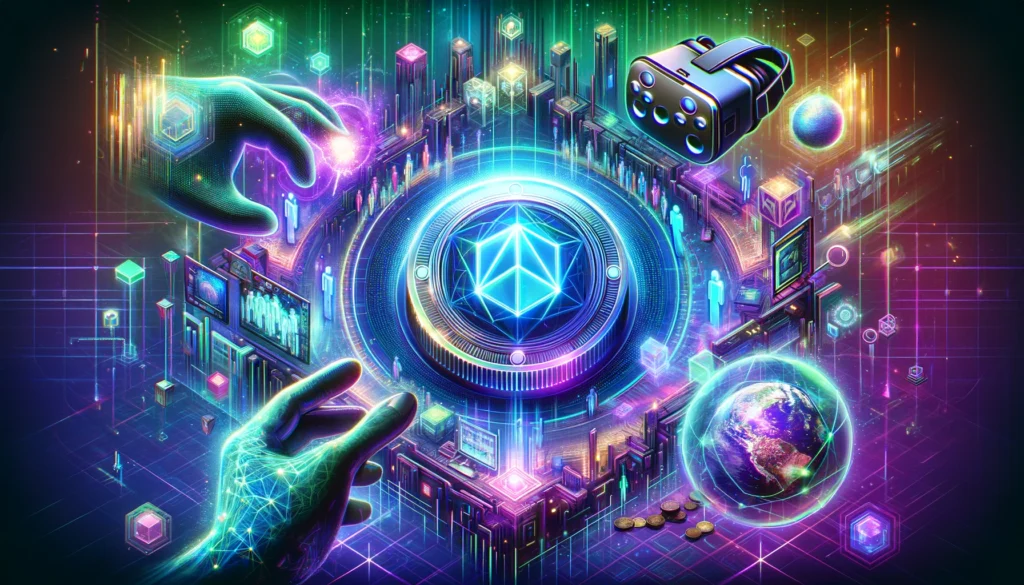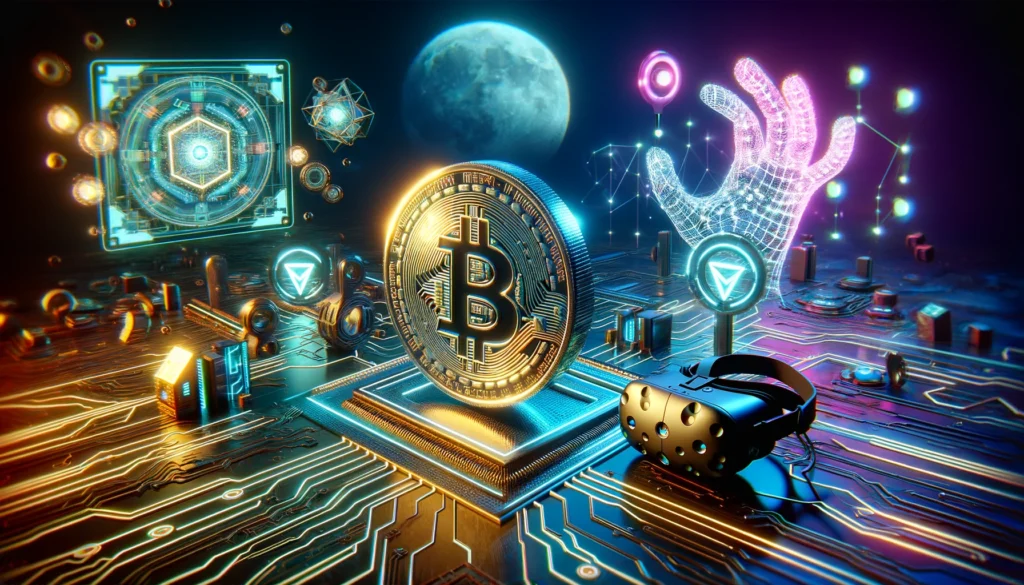NFTs have emerged as a groundbreaking force in the digital world, intertwining with various industries. For new cryptocurrency gamers and enthusiasts, understanding the role of NFTs in virtual reality and gaming is crucial.
Non-Fungible Tokens, or NFTs, are unique digital assets verified using blockchain technology. Unlike traditional digital assets that can be replicated endlessly, NFTs are distinctive. They cannot be exchanged on a one-to-one basis, making them ideal for representing ownership of unique items. In virtual reality and gaming, NFTs are proof of ownership for digital assets, ranging from virtual real estate to exclusive in-game items.
One of the most significant aspects of NFTs in gaming is their ability to confer real-world value to virtual items. For instance, in a VR game, a player might purchase a piece of digital art as an NFT, which can then be displayed within their virtual space or resold in the real world. This blurs the lines between virtual and physical ownership, adding a layer of value to the gaming experience.
The Impact of NFTs on the Gaming Industry
NFTs are revolutionizing the gaming industry by transforming in-game economies and player interactions. Games like ‘Axie Infinity’ demonstrate how NFTs can create a play to earn model where players can earn real money through in-game activities. This model has introduced a new economic ecosystem within games, where players are incentivized to participate for entertainment and potential financial gains.
However, the integration of NFTs in gaming has its challenges. Critics argue that it could lead to pay-to-win scenarios, where players with more financial resources can gain unfair advantages. As a new cryptocurrency gamer, it’s essential to be aware of the industry’s challenges and evolving nature.
NFTs and the Evolution of Virtual Reality Experiences

In virtual reality, NFTs enhance user experiences by enabling ownership and transfer of unique digital assets in a virtual space. For example, a user might buy a virtual concert ticket as an NFT, granting them access to an exclusive event in a VR world. This enhances VR’s immersion and opens up new avenues for creators and artists to monetize their work.
Furthermore, NFTs pave the way for more personalized and interactive VR experiences. Users can create, buy, and sell digital assets, shaping their virtual environments according to their preferences. This level of personalization and ownership is unprecedented in the virtual realm and is set to redefine how we interact with digital Content.
Navigating the Market: Buying and Selling NFTs for Gaming and VR
For newcomers in the cryptocurrency world, navigating the NFT market can be both exciting and daunting. The first step is understanding where and how to buy NFTs. Platforms like OpenSea, Rarible, and Enjin Marketplace are popular for trading NFTs related to gaming and virtual reality. Before making a purchase, it’s crucial to conduct thorough research on the NFT’s background, including its creator, history, and market value.
When buying NFTs for gaming or VR, consider the asset’s utility in the virtual world. Does it offer any in-game advantages or is it purely cosmetic? For instance, owning a piece of virtual land in a game like ‘Decentraland’ might provide you with creative control over that space, whereas a unique weapon in a game might offer gameplay advantages.
Selling NFTs involves understanding market trends and the perceived value of your digital asset. Monitor how similar NFTs perform in the market and set a competitive price. Remember, the value of NFTs can be highly speculative, and prices can fluctuate based on demand and market sentiment.
Legal and Ethical Considerations
The NFT space, being relatively new, is still navigating through legal and ethical waters. Intellectual property rights are a significant concern, especially in cases where digital art or assets are tokenized without the original creator’s consent. Traders should be cautious and ensure that the NFTs they deal with are legitimately sourced and sold.
Future Trends and Predictions
The future of NFTs in VR and gaming looks promising, with continuous innovations shaping the industry. We will likely see more immersive and interactive VR experiences powered by NFTs, offering users unprecedented personalization and ownership in virtual worlds.
Advancements in blockchain technology, like developing more energy-efficient consensus mechanisms, could address environmental concerns. Furthermore, as the legal framework around NFTs becomes more robust, we can expect a more secure and transparent market, enhancing trust and participation among traders.
Integrating augmented reality (AR) with NFTs could also open new frontiers, blending the physical and digital worlds in gaming and beyond. This could lead to a new era of gaming where your physical environment becomes a part of the gameplay, enhanced by digital assets owned as NFTs.
Conclusion
The intersection of NFTs with virtual reality and gaming is an exciting and evolving field, offering immense opportunities for innovation, engagement, and investment. As these technologies continue to mature, they are set to redefine our understanding of digital ownership and value. For new NFT investors, staying informed, cautious, and curious is key to navigating this dynamic landscape. The potential of NFTs in VR and gaming is vast, and we are just scratching the surface of what’s possible.

